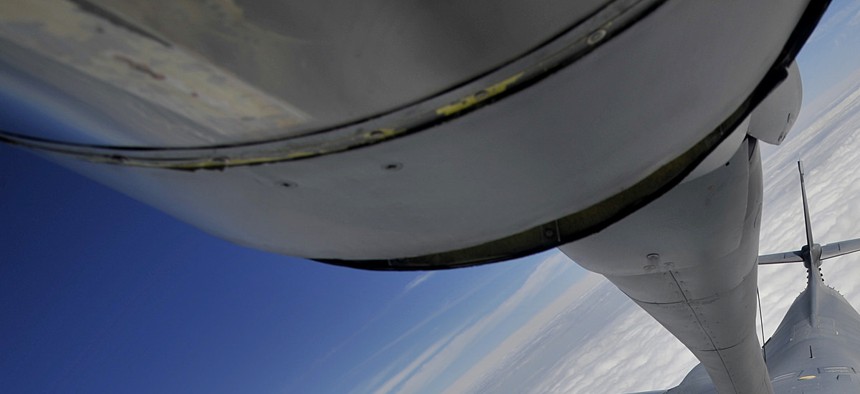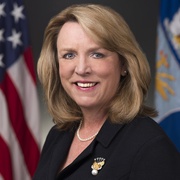
A KC-135 Stratotanker from Fairchild AFB refuels a B-1B Lancer during a training exercise over South Dakota, on September 23, 2014. U.S. Air Force photo by Senior Airman Mary O'Dell
The Air Force’s Quiet Energy Revolution
Now, more than ever, energy is a critical means to maintain our strategic advantage. By Air Force Secretary Deborah Lee James
Modern catch phrases like ‘energy security’ and ‘energy independence’ have had a renewed urgency in recent years as Americans felt the pinch of high oil prices and considered the benefits and risks of the domestic boom in natural gas and oil production.
But here at the Air Force, energy’s role in national security has always been top of mind, since without energy, we cannot fly planes, transport troops or run bases.
In that way, there’s been a quiet revolution at Air Force installations around the world.
The reason for this focus on energy is simple. In the event of natural or man-made catastrophe, we want to guarantee our planes can fly and our installations can operate in the face of disruptions in energy supplies. Now, more than ever, energy is a critical means to maintain our strategic advantage.
Put another way, energy is central to readiness. The Air Force has developed four priorities in a Strategic Energy Plan: improve our resiliency; reduce our demand; make sure we have an assured supply; and foster an energy-aware culture. This approach improves our ability to manage energy needs in a way that keeps our troops ready. By executing this strategy, we realize a secondary benefit of saving money, which we can redirect into training, equipment and other priorities.
As we look to improve resiliency, diversity of fuel source gives us the flexibility to bounce back if energy supplies are disrupted. With this in mind, we are improving resiliency at our bases through a variety of means, to include windmills at Joint Base Cape Cod in Massachusetts, reducing dependence on the commercial electrical grid.
Reducing energy demand on our bases means that every kilowatt of power we avoid using is one we do not need to replace in the case of supply disruption. We are reducing energy demand using new technology and new methods. We are developing technology through research, development, testing and evaluation, as with the Adaptive Engine Technology Development initiative. In essence, we are working with government and business partners to build a new kind of jet engine that could use as much as 25 percent less fuel and provide 10 percent more thrust than today’s systems. This means our aircraft will fly farther on less fuel. You can imagine the net savings to the Air Force – the government’s largest user of fuel – if we can make this project work.
(Related: Future Planes Could Run on Fuel Made from Sunlight)
We know that when our major commands review and update their mission planning to make energy a consideration, they are able to increase effectiveness. Air Mobility Command, which flies our aerial refueling tankers and cargo planes, did this and increased by more than 9 percent the distance it can transport a ton of cargo on a gallon of fuel.
We also reduce demand by training more efficiently. At Altus Air Force Base in Oklahoma, the 97th Air Mobility Wing trimmed the fat from its air drop and air refueling training programs, using only the closest tracks and most efficient flight routes, to save $30 million per year. That, from just two initiatives.
All of these efforts to improve resiliency and reduce demand also ensure a supply of energy when we need it, where we need it.
These innovations, improvements and plans happen because we are now fostering an energy-aware culture. We know from decades of experience that airmen are the best source of new methods for continuing the energy revolution. Many of our best ideas came from the rank and file, including the restoration of a historic World War II-era hangar at Wright-Patterson Air Force Base, Ohio, now a paragon of energy-saving design and world-class energy saving measures. Another is a holistic energy plan instituted at RAF Mildenhall, England. Airmen deserve the lion’s share of the credit, and that’s worth highlighting that October is Energy Action Month.
A final thought. The Air Force is not taking this approach because it’s politically attractive or expedient. We’re doing it for the same reason we do everything – to better complete our mission.





